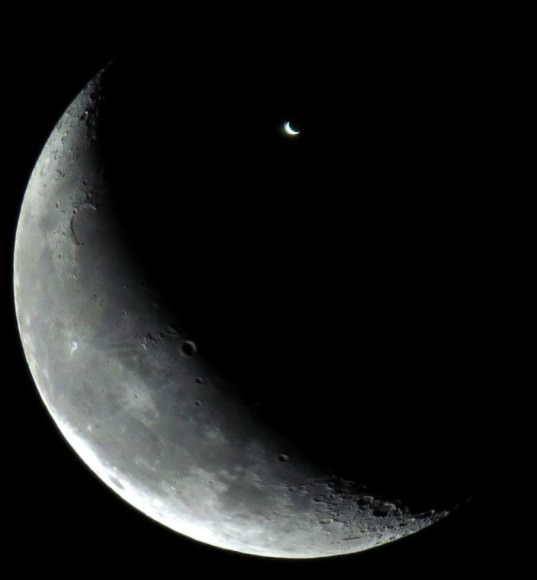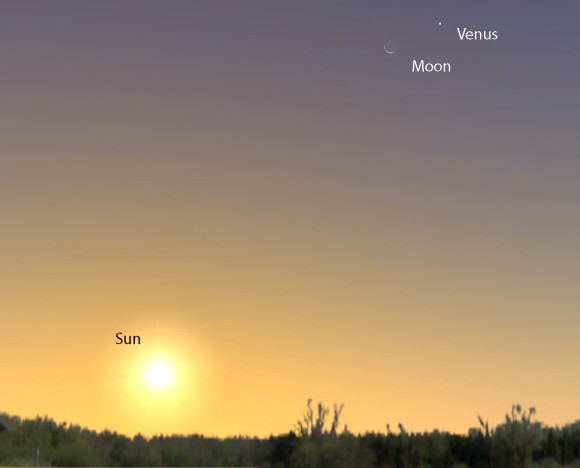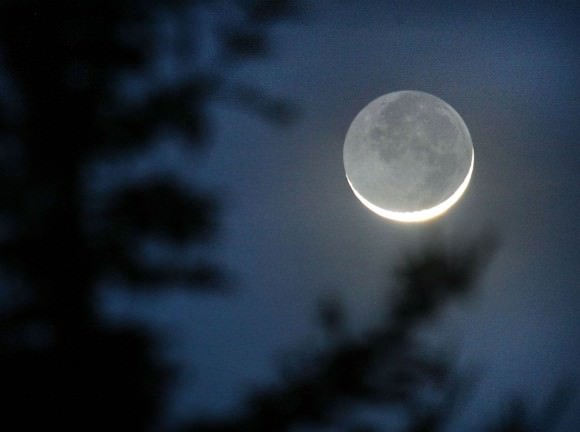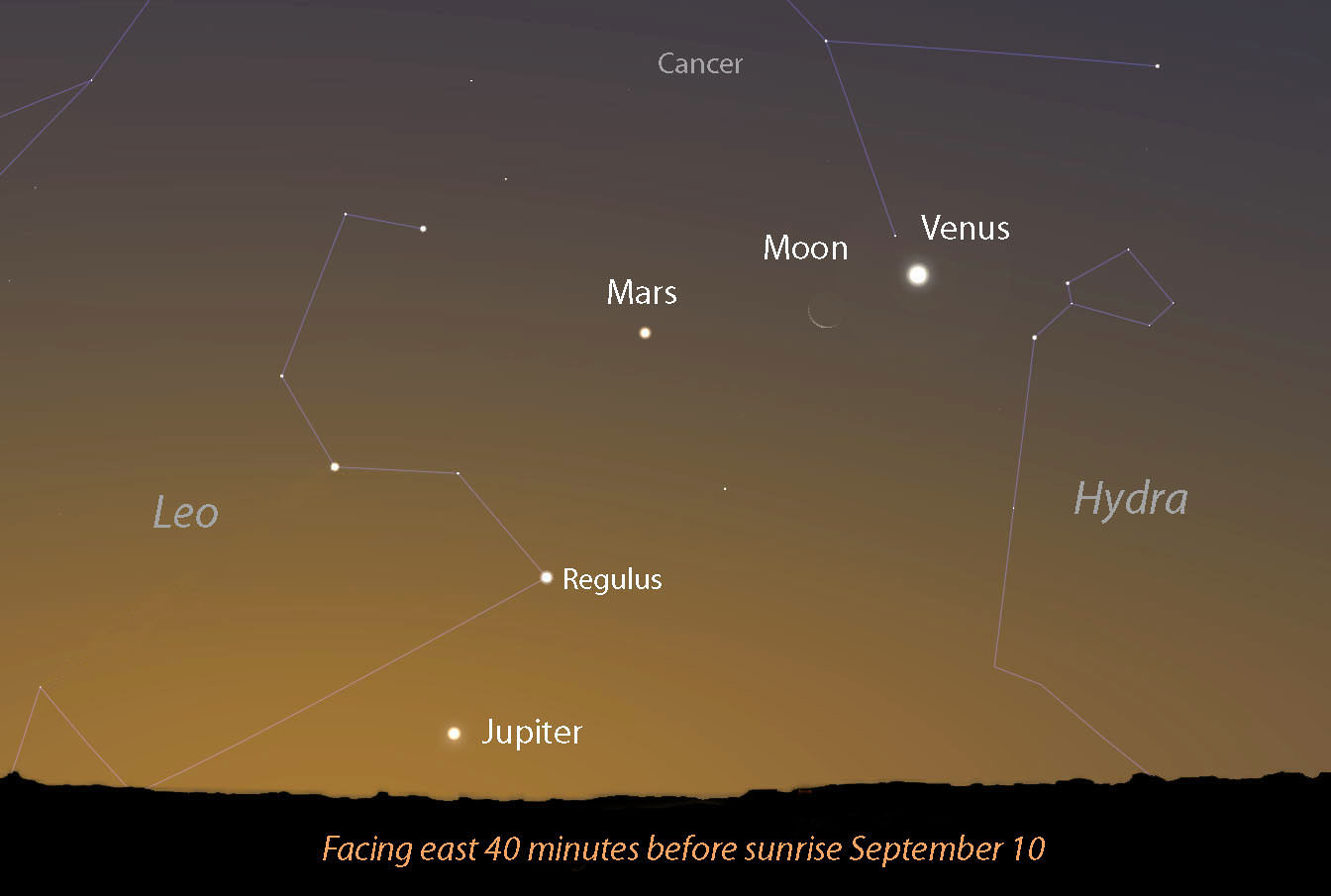The dawn sky’s where it’s happening. With Saturn swiftly sinking westward at dusk, bright planets have become scarce in the evening hours. But if you get up early and look east, you’ll discover where the party is. Venus, Mars and now Jupiter have the dance floor.

What’s more, the sky gods have seen fit to roll a thin crescent Moon alongside Venus Thursday morning (Sept. 10). This lovely twinning of crescents is best seen about 75 minutes to an hour before sunrise. All you need is a pair of 10x binoculars to see the peewee Venusian version. Its waning crescent phase closely mimics the Moon’s.
From the U.S., the separation between the two will vary from 3° for the East Coast to 4.5° for the West. European and African skywatchers will witness the actual conjunction with the Moon gliding 2.5° north of the planet.

Much fainter Mars, checking in at magnitude +1.8, lies 6° to the left or east of the Moon. It thrills me to see Mars begin a new apparition with its return to the morning sky. Next year, the Red Planet reaches opposition on May 22 in the constellation Scorpius, when it will be brighter than Sirius and more than 18 arc seconds across, its biggest and closest since 2005.
Remember Jupiter? We lost it in the solar glare more than a month ago, but if you can find a location with a nice, open eastern horizon, you can welcome the ever-jovial planet back Thursday. Bring binoculars just in case! Jove’s only a few degrees high in moderately-bright twilight.

When you look at the Moon Thursday, most of it will be illuminated not by sunlight but by Earth-light called earthshine. This smoky, dark glow results from sunlight bouncing off the globe into space to softly light the otherwise shadowed portion of the Moon. The effect is most pleasing to the eye and remarkable in binoculars, which reveal lunar seas and even larger craters shrouded in blue-dark. Don’t miss it!


Tom Ruen”s picture of the Moon and Venus with the latter inside the circumference of the Moon is of course not possible so he must have dragged the images together to show both Crescents close up in this picture frame what a great shot.
UFO,
Indeed he did! That’s why I called it montage to distinguish it from a single image. It IS a great shot (s), I agree,